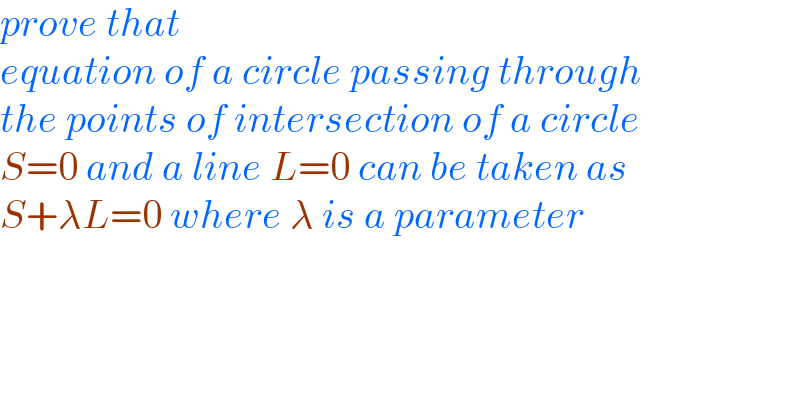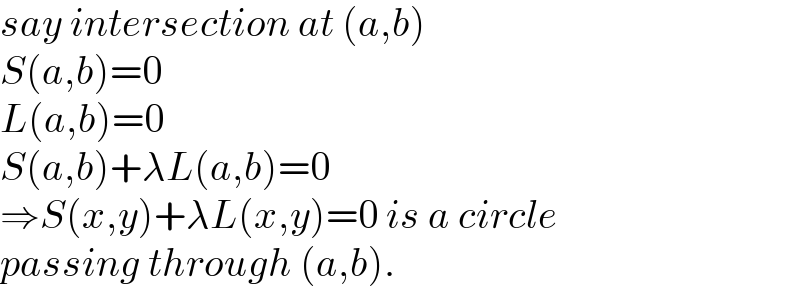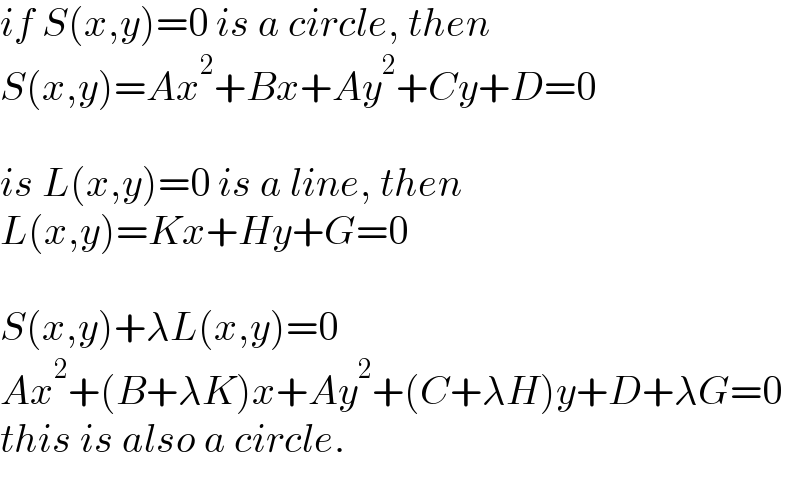Question Number 147144 by gsk2684 last updated on 18/Jul/21

Answered by mr W last updated on 18/Jul/21

Commented by gsk2684 last updated on 20/Jul/21

Commented by mr W last updated on 20/Jul/21

Commented by gsk2684 last updated on 21/Jul/21
![condition that the equation ax^2 +ay^2 +2gx+2fy+c=0 represent a circle is g^2 +f^2 −ac ≥ 0 ∵radius ≥0 i would like to verify the condition (((B+λK)/2))^2 +(((C+λH)/2))^2 −A(D+λG) ≥0 consider (((B+λK)/2))^2 +(((C+λH)/2))^2 −A(D+λG) [((B/2))^2 +((C/2))^2 −AD]+λ(BK+CH−AG)+((λ^2 (K^2 +H^2 ))/4) some confusion to proceed from this](https://www.tinkutara.com/question/Q147457.png)
